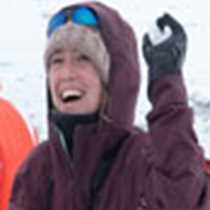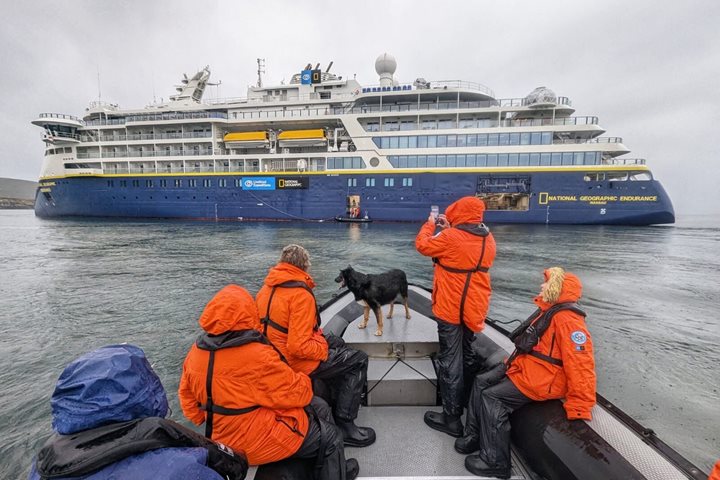Today began early, with a sunrise landing at Gold Harbour. The beach there was a buzzing metropolis of king penguins, southern elephant seals, Antarctic fur seals, and a plethora of other, less-conspicuous residents—South Georgia pintails and pipets, gentoo penguins, snowy sheathbills, and of course, the ever-present giant petrels and skuas.
In the darkness, we listened to a cacophony of screeches and chatter and looked out toward the rising sun. A pink glow lit the horizon as the magnitude of life across the beach and the nearby Bertrab Glacier came into view.
After breakfast, we had the option of hiking up into the surrounding hills or sitting with the king penguin colony which numbered somewhere in the region of 25,000 pairs. Suddenly, a thunderous noise even louder than the chatter of the kings or the bellows of the bull elephant seals filled the harbor. A huge piece of the Bertrab Glacier calved down the sheer cliff face, leaving a slew of bergy bits and growlers in the glacial meltwater below. This wasn’t an unusual occurrence at Gold Harbour. Since 1985, it’s estimated that the glacier here has retreated by more than a kilometer—a shockingly rapid rate of retreat.
After lunch we cruised into South Georgia’s only fjord on the southern tip of the island—the staggeringly beautiful Drygalski Fjord. Mountains rise from the sea to more than 1,000 meters high here, creating a beautiful panoramic landscape. Either side of the rift displays different and interesting geology; the mountains on the northern shore are the oldest rocks in South Georgia—and were once part of the continental margin of Gondwana. We headed out to do some iceberg watching and take a look at iceberg B15, which measures more than 10 kilometers!







